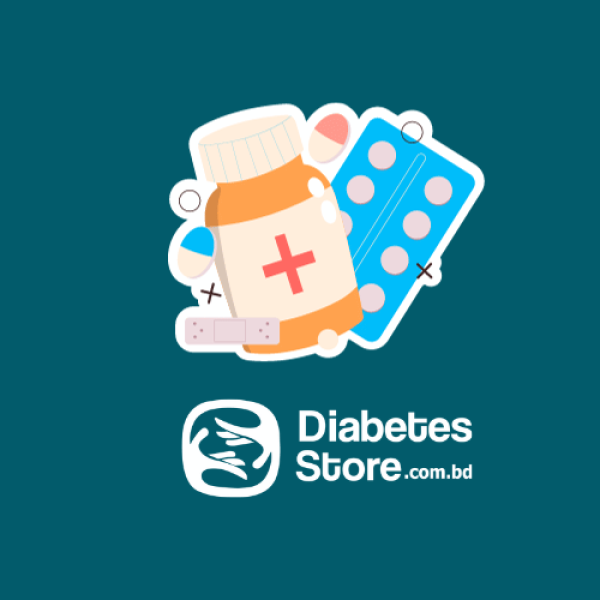
- Stock: Out Of Stock
- Brand: Acme Laboratories Limited
- Product ID: Metoclopramide Hydrochloride
100% Secure Payment

This Item is for pre order
Nutramid 10 mg Tablet
Indications
Intubation of the small intestine, Premedication for radiologic examination of the upper gastrointestinal tract, Prophylaxis of chemotherapy-induced nausea and vomiting, Nausea and vomiting associated with cancer chemotherapy or radiotherapy, Diabetic gastric stasis, Gastro-oesophageal reflux disease, Diabetic gastric stasis, Prophylaxis of postoperative nausea and vomiting
Therapeutic Class
Anti-emetic drugs, Prokinetic drugs
Pharmacology
Metoclopramide blocks dopamine receptors and in higher doses, it also blocks serotonin receptors in chemoreceptor trigger zone of the CNS. It enhances the response to acetylcholine of tissue in upper GI tract causing enhanced motility and accelerated gastric emptying w/o stimulating gastric, biliary, or pancreatic secretions. It also increases lower esophageal sphincter tone.
Dosage
Intravenous-
Intubation of the small intestine, Premedication for radiologic examination of the upper gastrointestinal tract:
Adult: 10 mg as a single dose by slow inj over 1-2 min.
Child: <6 yr 0.1 mg/kg as a single dose; 6-14 yr 2.5-5 mg as a single dose.
Prophylaxis of chemotherapy-induced nausea and vomiting:
Adult: For highly emetogenic drugs/regimens: Initially, 2 mg/kg by slow inj over at least 15 min, 30 min before chemotherapy. Repeat 2 hrly for 2 doses, then 3 hrly for 3 doses. For less emetogenic drugs/regimens: 1 mg/kg may be used. Max duration: 5 days.
Oral-
Nausea and vomiting associated with cancer chemotherapy or radiotherapy:
Adult: 10 mg, up to tid. Max duration: 5 days.
Diabetic gastric stasis:
Adult: 10 mg 4 times daily for 2-8 wk.
Gastro-oesophageal reflux disease:
Adult: 10-15 mg 4 times daily, depending on severity of symptoms. If symptoms are intermittent, may give single doses of 20 mg prior to provoking situation. Max duration: 12 wk.
Elderly: 5 mg/dose.
Parenteral-
Diabetic gastric stasis:
Adult: 10 mg 4 times daily by IM inj or slow IV inj over 1-2 min for up to 10 days. Convert to oral admin when symptoms subside sufficiently.
Prophylaxis of postoperative nausea and vomiting:
Adult: 10 mg as a single dose by IM or slow IV inj over at least 3 min.
Child: 1-3 yr 10-14 kg: 1 mg tid; >3-5 yr 15-19 kg: 2 mg tid; >5-9 yr 20-29 kg: 2.5 mg tid; >9-18 yr 30-60 kg: 5 mg tid. Max duration: 48 hr.
Administration
Should be taken on an empty stomach. Take ½ hr before meals.
Interaction
Antagonistic effect with anticholinergics and morphine derivatives. Potentiation of sedative effects with CNS depressants. Additive effect with other neuroleptics on the occurrence of extrapyramydal disorders. May increase the risk of serotonin syndrome with serotonergic drugs (e.g. SSRIs). May decrease digoxin bioavailability. May increase ciclosporin bioavailability. May prolong the neuromuscular blocking effect of mivacurium and suxamethonium. Increased exposure levels with strong CYP2D6 inhibitors (e.g. fluoxetine). May reduce plasma concentration of atovaquone.
Contraindications
GI haemorrhage, mechanical obstruction or GI perforation; confirmed or suspected pheochromocytoma; history of neuroleptic or metoclopramide-induced tardive dyskinesia; epilepsy, Parkinson’s disease; history of methaemoglobinaemia with metoclopramide or of NADH cytochrome-b5 deficiency. Concomitant use with levodopa or dopaminergic agonists.
Side Effects
Extrapyramidal symptoms (usually acute dystonic reactions); parkinsonism; tardive dyskinesia; restlessness, drowsiness, dizziness, anxiety, confusion, tremor; hallucinations (rare); depression w/ suicidal ideation; hypotension, HTN, GI disturbances, dyspnoea, visual disturbances, urinary frequency and incontinence, headache; hypersensitivity reactions (rash, bronchospasm, angioedema); galactorrhoea or related disorders; blood disorders; transient increase in plasma-aldosterone concentration. IV: Cardiac conduction disorders, transient flushing of face and upper body (high dose).
Pregnancy & Lactation
Category B: Either animal-reproduction studies have not demonstrated a foetal risk but there are no controlled studies in pregnant women or animal-reproduction studies have shown an adverse effect (other than a decrease in fertility) that was not confirmed in controlled studies in women in the 1st trimester (and there is no evidence of a risk in later trimesters).
Precautions
Patients with underlying neurological conditions, cardiac conduction disturbances, uncorrected electrolyte imbalance, bradycardia. Renal and hepatic impairment. Elderly, childn. Pregnancy and lactation.
Overdose Effects
Symptoms: Extrapyramidal disorders, drowsiness, decreased level of consciousness, confusion, hallucination, cardiorespiratory arrest.
Management: Symptomatic treatment with continuous monitoring of CV and resp functions. In case of extrapyramidal symptoms, treatment is symptomatic (benzodiazepines in childn and/or anticholinergic antiparkinsonian medicinal products in adults).




















%20Pvt.%20Ltd./Movicol-Oral-Powder-190x190.jpg)





